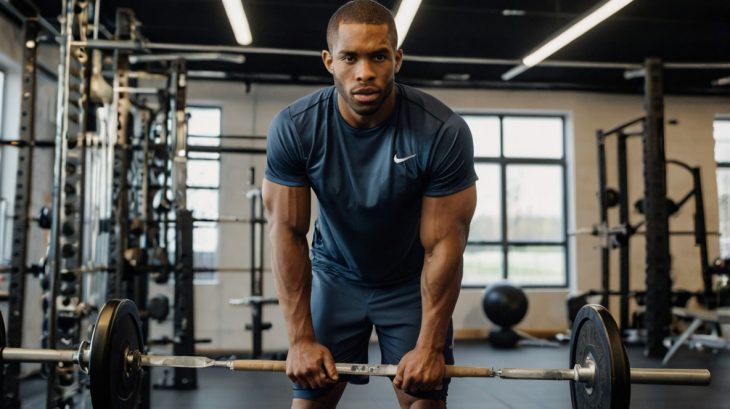
Professional athletes are often viewed as physical specimens, pushing their bodies to the absolute limit to achieve peak performance. But the true secret behind their success isn’t just the work they do in the gym or the field; it’s the combination of mental and physical training. From NFL quarterbacks who visualize every play before stepping onto the field to Olympic sprinters honing their concentration in the moments leading up to a race, athletes exercise their minds as intensely as their bodies.
It’s a misconception that you need to have the talent or resources of a pro athlete to benefit from this approach. The mind-body connection isn’t limited to elite performers; anyone can tap into it, and it can dramatically improve physical and mental well-being.
Mental Conditioning is as Important as Physical Training
Talk to any seasoned NFL player, and they’ll emphasize that mastering the mental side of the game is as vital as the hours spent lifting weights or sprinting drills. Mental preparation isn’t just a supplement to physical training; it’s a game-changer. Players often pour over film, breaking down every detail of their opponents’ tactics, training their minds to anticipate and adapt to the ever-changing dynamics of game day.
Take Tom Brady. Across his storied, two-decade career, Brady became renowned for his intense preparation—both on the field and in his head. He didn’t just focus on physical drills; he visualized each play, mentally rehearsing entire games to make his reactions instinctive when the stakes were high. This wasn’t merely about knowing his opponent; it was about training his mind to remain composed, razor-focused, and ready to execute.
And this kind of mental conditioning isn’t limited to quarterbacks or coaches. The principles apply just as well off the field—whether you’re prepping for a crucial presentation, stepping up for public speaking, or just trying to stay steady through a challenging day at work.
Visualization, deep focus exercises, and breathing techniques can help sharpen your mind for whatever lies ahead. It’s not only athletes who benefit; many professional poker players have highlighted how these techniques help maintain composure and precision under pressure.
Movement: The Foundation of Athletic Training
When it comes to physical training, professional athletes focus on more than just strength and endurance. They train for mobility, balance, and coordination—attributes crucial in their respective sports but also highly beneficial in everyday life. Movement is the cornerstone of any athlete’s regimen, and it should be the same for anyone looking to improve their overall health.
For instance, NFL linebackers and soccer players spend considerable time working on their agility, allowing them to shift direction quickly and react to sudden changes on the field. Wide receivers like Tyreek Hill don’t just focus on running fast in a straight line; they train their bodies to make sharp cuts, spin away from defenders, and keep their balance in motion.
Incorporating agility drills, balance work, and even dynamic stretching into your workout routine can improve coordination and reduce the risk of injury. These movements also enhance body awareness, helping you move more efficiently throughout the day.
You don’t need to be a pro athlete to adopt these principles. Start by paying attention to how your body feels as you move. Are you favoring one side? Struggling with balance? Incorporating lateral movements or single-leg squats can help address these imbalances and make you feel more connected to your body.
The Power of Rest and Recovery
For many athletes, the hardest part of training isn’t the grind of practices or games—it’s learning how to rest. LeBron James, now 39 and still performing at an elite level, has credited much of his longevity to his recovery routine, which includes everything from cryotherapy to meditation. Similarly, Serena Williams, one of the greatest tennis players of all time, swears that quality sleep as one of the most critical factors in maintaining her performance.
Recovery isn’t just about taking a day off or getting a good night’s sleep. It’s an active process that involves stretching, hydration, nutrition, and even mental relaxation techniques. Professional athletes understand that recovery is where the body repairs itself, grows stronger, and adapts to its demands.
Neglecting recovery can lead to burnout or injury, derailing progress and motivation for the everyday person. It’s crucial to recognize the importance of rest to prevent injuries and sustain long-term success in any physical or mental endeavor. Incorporating elements like yoga, meditation, or even a short nap into your routine can significantly affect your performance.
Conclusion
Adopting a professional athlete’s approach to training and recovery doesn’t require access to state-of-the-art facilities or a full-time coach. It’s about being intentional—adding mindfulness to your morning routine, dialing up the intensity during a workout, or using visualization to prepare for a challenging task. The goal is to balance pushing your limits and knowing when to recharge.
Embrace mental conditioning as much as physical. A sharper focus and better stress management can elevate more than just your athletic performance—they can improve your overall quality of life.
Was this page helpful?
Our commitment to delivering trustworthy and engaging content is at the heart of what we do. Each fact on our site is contributed by real users like you, bringing a wealth of diverse insights and information. To ensure the highest standards of accuracy and reliability, our dedicated editors meticulously review each submission. This process guarantees that the facts we share are not only fascinating but also credible. Trust in our commitment to quality and authenticity as you explore and learn with us.
